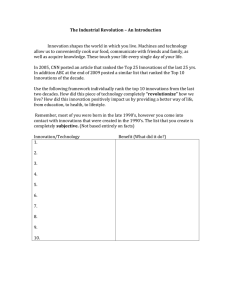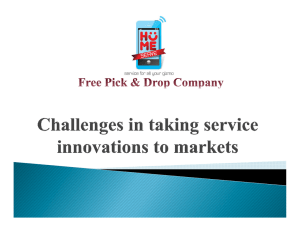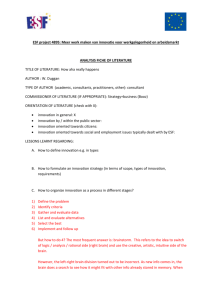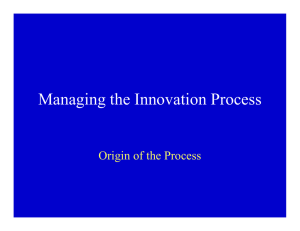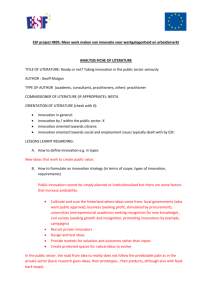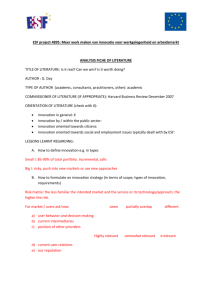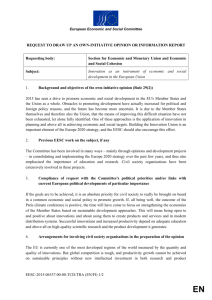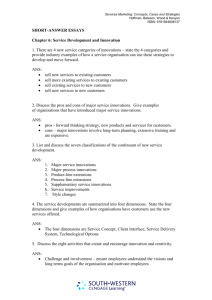ESF project 4895: Meer werk maken van innovatie voor
advertisement
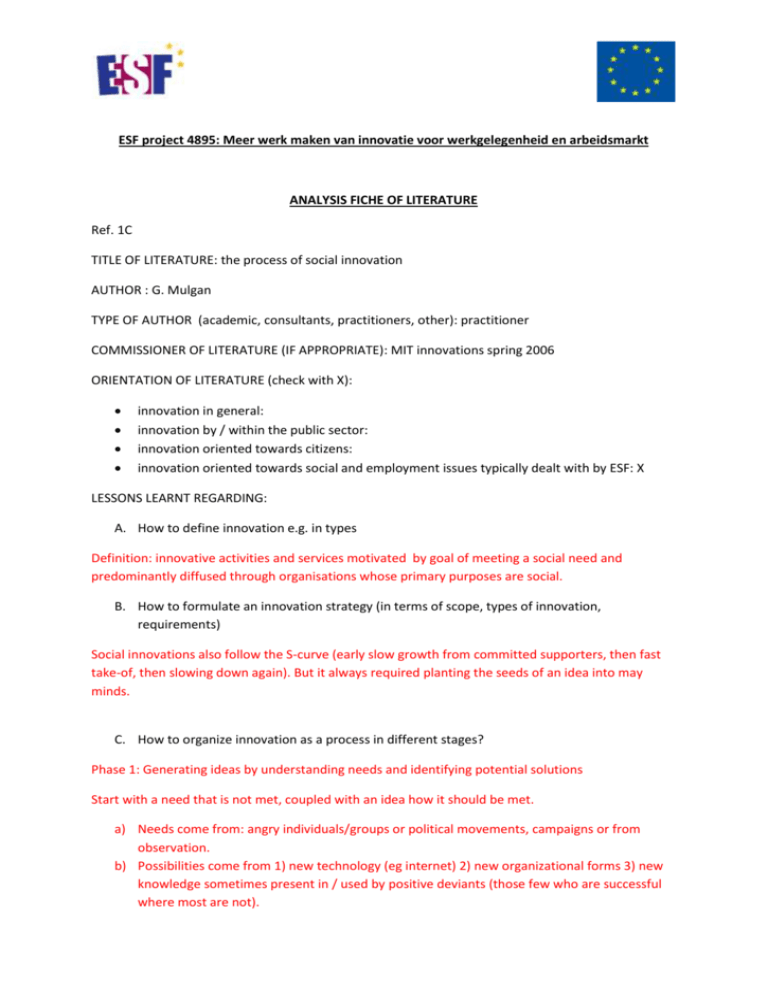
ESF project 4895: Meer werk maken van innovatie voor werkgelegenheid en arbeidsmarkt ANALYSIS FICHE OF LITERATURE Ref. 1C TITLE OF LITERATURE: the process of social innovation AUTHOR : G. Mulgan TYPE OF AUTHOR (academic, consultants, practitioners, other): practitioner COMMISSIONER OF LITERATURE (IF APPROPRIATE): MIT innovations spring 2006 ORIENTATION OF LITERATURE (check with X): innovation in general: innovation by / within the public sector: innovation oriented towards citizens: innovation oriented towards social and employment issues typically dealt with by ESF: X LESSONS LEARNT REGARDING: A. How to define innovation e.g. in types Definition: innovative activities and services motivated by goal of meeting a social need and predominantly diffused through organisations whose primary purposes are social. B. How to formulate an innovation strategy (in terms of scope, types of innovation, requirements) Social innovations also follow the S-curve (early slow growth from committed supporters, then fast take-of, then slowing down again). But it always required planting the seeds of an idea into may minds. C. How to organize innovation as a process in different stages? Phase 1: Generating ideas by understanding needs and identifying potential solutions Start with a need that is not met, coupled with an idea how it should be met. a) Needs come from: angry individuals/groups or political movements, campaigns or from observation. b) Possibilities come from 1) new technology (eg internet) 2) new organizational forms 3) new knowledge sometimes present in / used by positive deviants (those few who are successful where most are not). Few ideas emerge fully formed. Often innovators try, play and adjust. New ideas are also rarely new, mostly they combine ideas that already exist. They straddle the boundaries of sectors and disciplines. To really innovate pushing for a real challenge is necessary: go for the most difficult groups or issues. Sometimes ideas can be bought on the open market (eg prizes via Innocentive platform). Also, there are “labs” linking organisations and universities with a focus on particular themes. Phase 2: developing, prototyping and piloting ideas Wikipedia was a failure in its first outing. Before something works may take a few tries. Also, it may take a while between proving something works in pilot, and it getting adopted mainstream. Investors need to hold their nerve then. Phase 3: Assessing, scaling up and diffusing Creative bees (social entrepreneurs) need to find supportive trees (big organisations who can make things happen at scale). Innovators therefore need to capture the imagination of a community of supporters through courage and persistence. Good names / identities with good stories matter. The skills and mindset for radical innovation are not the same as those to scale up and consolidate. Social entrepreneurs need to let go at some moment. Phase 4: Learning and evolving An innovation consolidates in a particular context, then evolves towards new contexts (learning again). D. How to define outputs of innovation e.g. in terms of idea, concept, prototype…? E. How to make decisions regarding progress of an innovation? F. What roles exist for different actors in the innovation process? What competences are required for these roles? Individual leaders and also collective movements have led to many social innovations. In both cases, the basis was discontent. A combination of exclusion, resentment, passion and commitment makes social change possible. Innovators require for understanding needs: a) empathy (eg use ethnography) b) personal motivation (eg solve problems you have yourself or you care about) They require for seeing possibilities: a) wide peripheral vision b) to link apparently unrelated methods and ideas together . G. How to organize interaction with external stakeholders (open innovation)? H. Specific tools that are explained (list briefly for each tool in what stage, by which role, why, how it is to be used). a) Tool 1: Innovation accelerator like the Young Foundation launch pad. Seed money for innovation teams that combine understanding of policy contexts with design, business, growth, management. Tool 2: government allows national rules to not apply in certain shielded spaces for innovation

